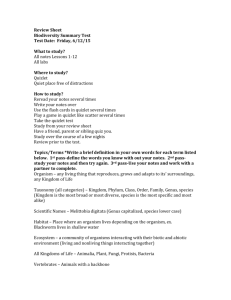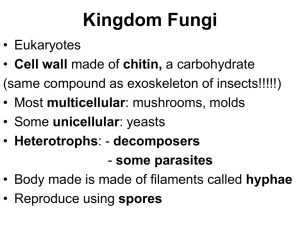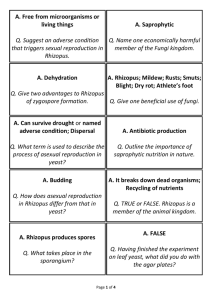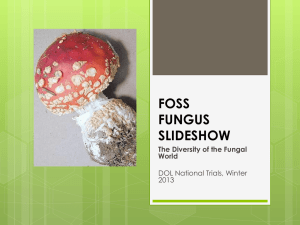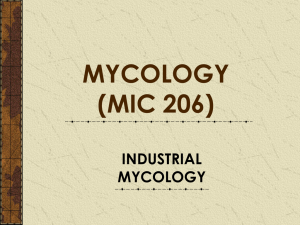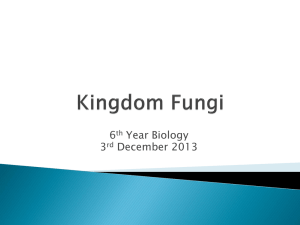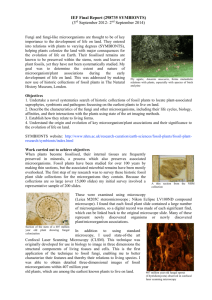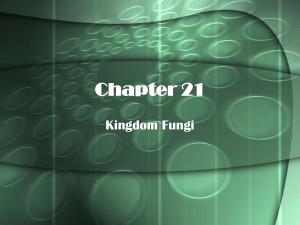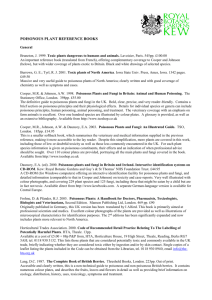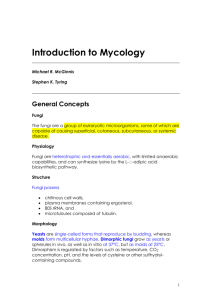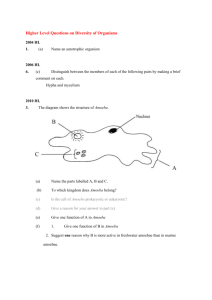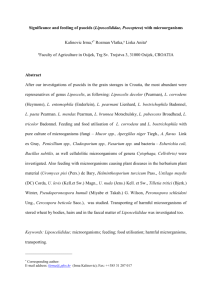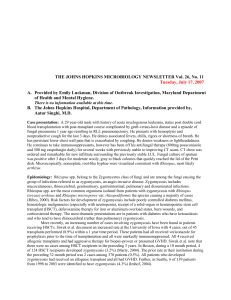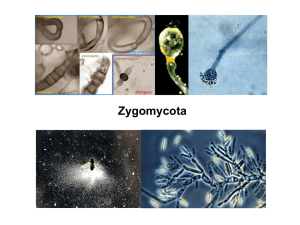Fungi - Leaving Cert Biology
advertisement
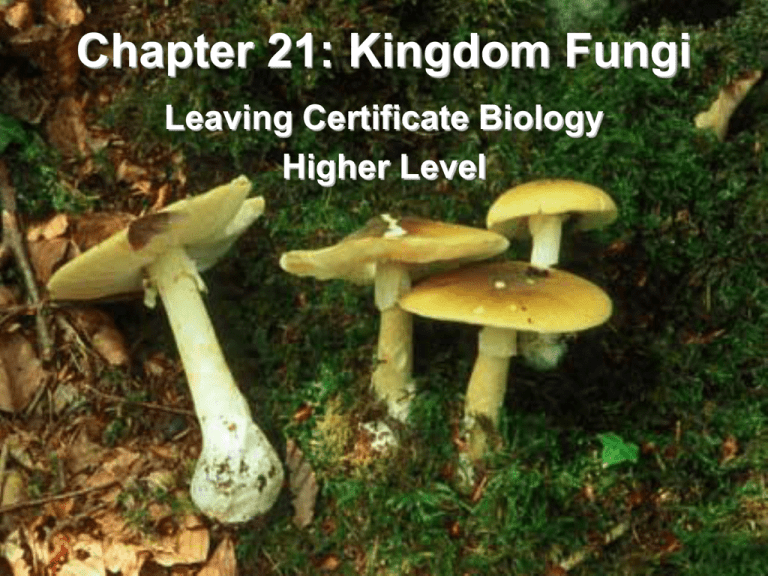
Chapter 21: Kingdom Fungi Leaving Certificate Biology Higher Level Fungi • Fungi are eukaryotic organisms meaning that they have membrane-bound nuclei and organelles • Types of fungi: – Saprophytic: fungi that feed on dead organic matter, e.g. mushrooms and moulds • Some mushrooms are edible but many are poisonous (method for identification of mushrooms involves using an expert mycologist or a mushroom key) – Parasitic: fungi that feed on living organic matter Edible v Poisonous Fungi • Edible: – St. George’s mushroom (Calocybe gambosa) – Horse mushroom (Agaricus arvensis) Edible v Poisonous Fungi • Poisonous: – The Death Cap (Amanita phalloides) – The Destroying Angel (Amanita virosa) Rhizopus – common bread mould • Rhizopus is a saprophytic fungus that feeds on bread and soft fruits by secreting enzymes into the starchy substrate • Reproduction in Rhizopus is either sexual or asexual Structure of Rhizopus Asexual Reproduction in Rhizopus • Hyphae grow and form sporangiophores with a sporangium on the end of each one • Each sporangium contains many cells that develop a tough wall – they are now called spores • Spores are eventually released and germinates to produce a new mycelium Sexual Reproduction in Rhizopus • Two hyphae (plus and minus strains) grow close together • Swellings called pro-gametangia form opposite each other eventually coming together • Nuclei enter the swelling followed by formation of a cross wall separating the swelling from the hypha – swellings now called gametangia • The two gametangia that are in contact with each other fuse and fertilisations occur in the gametangia to form zygospore • Zygospore can remain dormant for a long time before germinating under favourable conditions Yeast (Saccharomyces) • Structure: – Yeast are single-celled fungi with a cell wall (made of chitin), nucleus, vacuoles, and a very granular cytoplasm Yeast Reproduction • Yeast cell reproduce asexually by a process called ‘budding’ • The yeast cell reproduces itself by mitosis and the new nucleus enters a small bud, which either remains attached to the parent cell or detaches completely • If bud remains attached a colony can be formed by continuous budding of the new buds – however, they eventually detach to form single yeast cells Yeast Reproduction Economic Importance of Fungi • Beneficial fungi: 1) Yeast is used in brewing beer 2) Edible mushrooms (St. George’s mushrooms and Horse mushrooms) • Harmful fungi: 1) Rhizopus (bread mould) spoils bread and other food 2) Athlete’s foot – fungal infection of the skin between the toes 3) Potato blight – can destroy an entire potato field Culturing Microorganisms • Care should always be taken when dealing with microorganisms – even harmless microorganisms • Before growing microorganisms in agar everything must be sterile or otherwise be sterilised • Asepsis is a procedure that involves avoiding all possible sources of contamination (more commonly called ‘aspetic technique’) • Sterility involves everything be free from microorganisms Culturing Microorganisms • Before culturing microorganisms the following should be carried out: – Hands should be washed and surgical gloves should be worn as well as a clean lab coat – The bench/work surface should be sterilised by washing with disinfectant such as Milton – Keep hands away from mouth and face during lab procedures – Keep all sterile containers closed until ready to use – such as the petri dishes (which are sterile) – Ensure the prepared agar is sterile prior to pouring into dishes by boiling for a few minutes – Flame inoculating loops in Bunsen prior to inoculation of dishes and after inoculation – Open all dishes for the shortest possible time to avoid air-borne microorganisms
